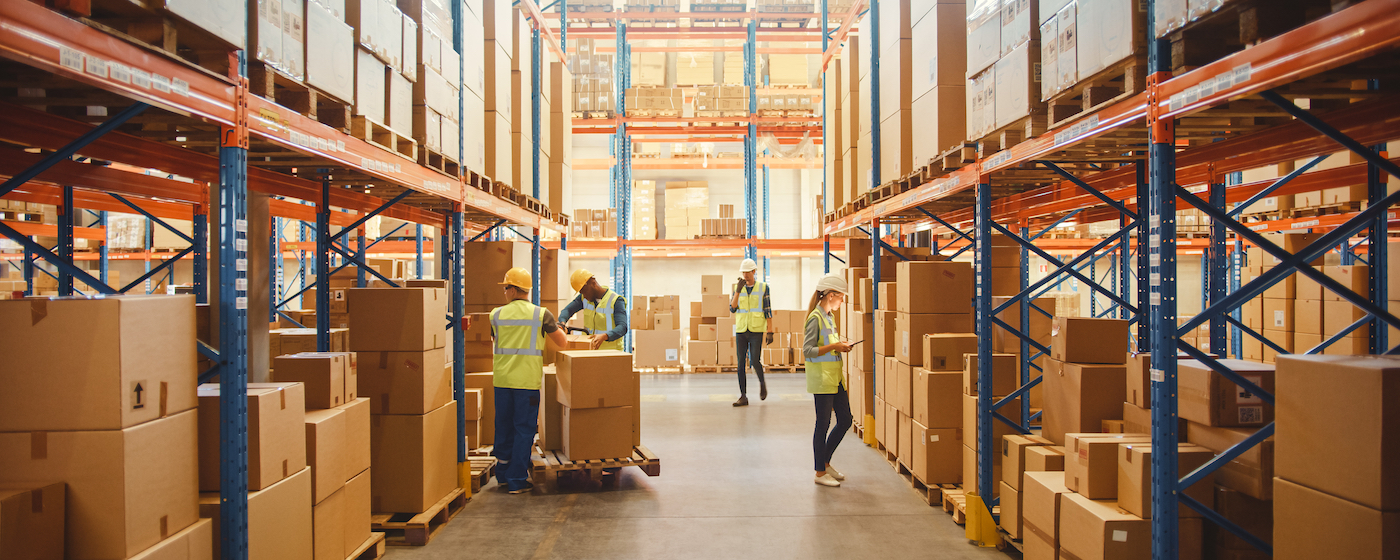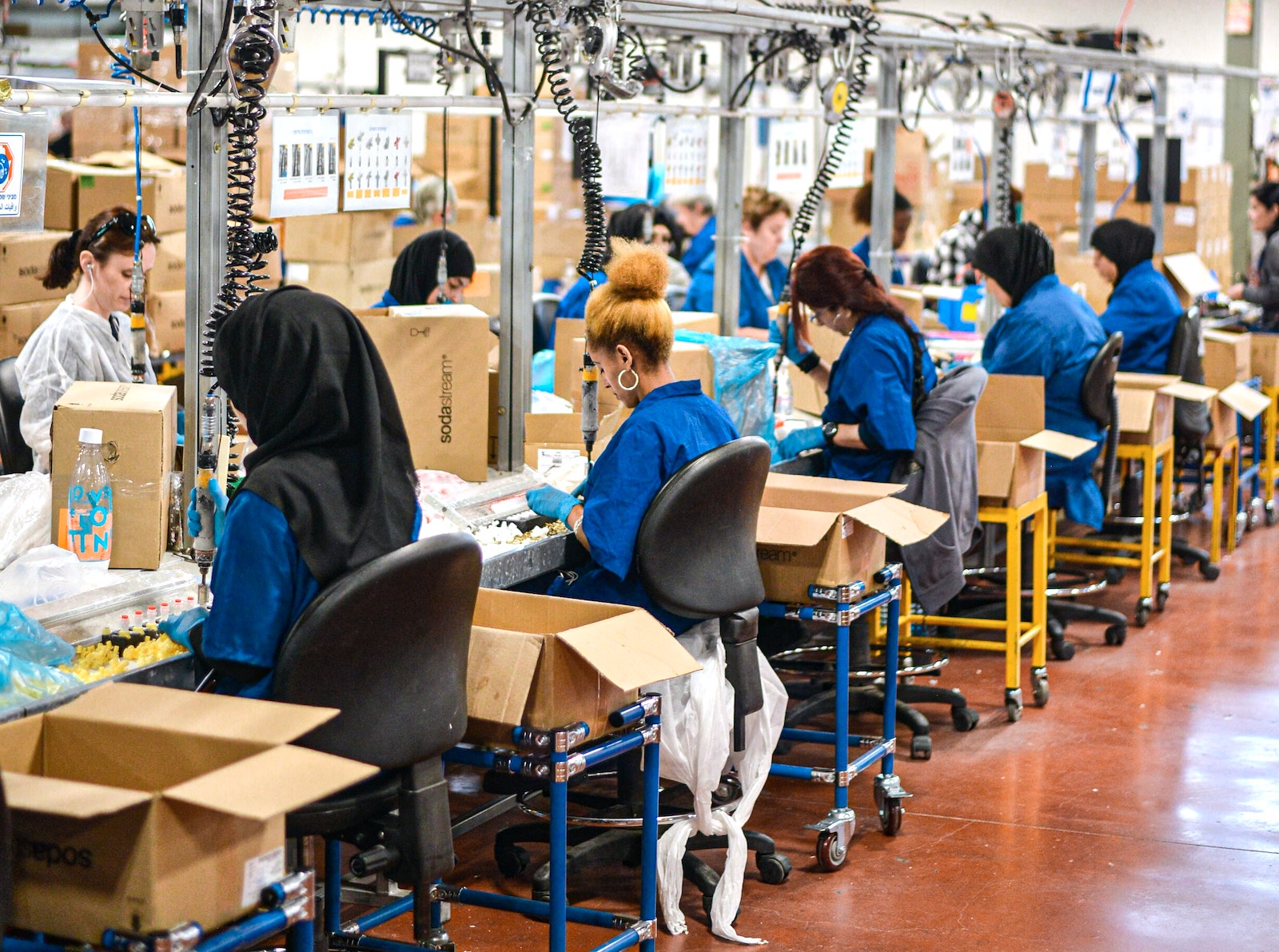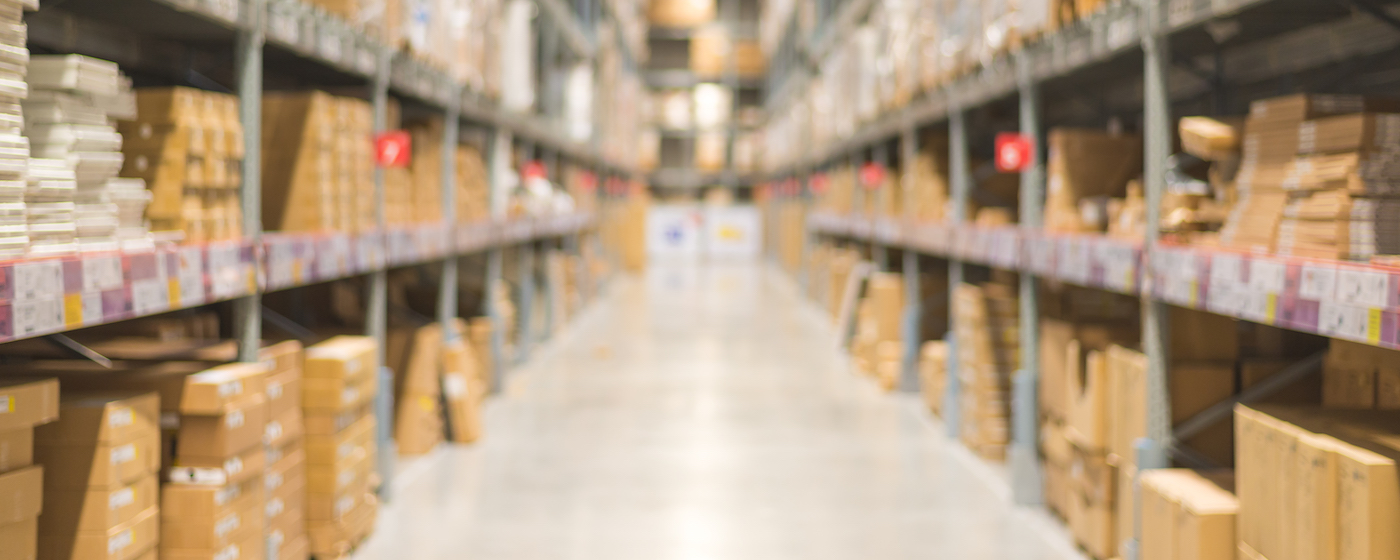Table of Contents
** Minutes
14 best warehouse types for modern ecommerce
How to choose the right warehouse for you
Enjoy warehousing magic with ShipBob
When it comes to supply chains and logistics management, warehousing is a crucial aspect of the operation. Most people think of a warehouse as simply a large commercial space with products scattered throughout. However, oftentimes there’s much more going on behind the scenes.
There are many different types of warehouses and for ecommerce businesses, selecting the right type can significantly impact your bottom line. Factors such as capacity, costs, and location are just the tip of the iceberg when it comes to choosing the right warehouse.
In this guide, we’ll explore 14 types of warehouses and shed light on their unique features, benefits, and optimal uses. By understanding each of these options, you’ll be better equipped with the knowledge to confidently choose the right one for your ecommerce business.
14 best warehouse types for modern ecommerce
Warehousing is far from a one-size-fits-all solution.
As the backbone of your supply chain, the right warehouse not only provides a space for storing inventory but can also influence the speed and efficiency of order fulfilment and affect your reach in the market.
The sections below break down each of the 14 types of warehouses, taking into account their growth potential, cost, prerequisites, and popular use cases.
1. Fulfilment centres
Warehouses and fulfilment centres — they’re the same thing, right? Not quite. Although both terms are often used interchangeably, they serve different functions.
Fulfilment centres play a critical role in the ecommerce industry. They handle inventory management, order management, picking, packing, shipping, and even returns. High-volume order processing and rapid delivery capabilities are their defining features. They’re designed to scale with your business, offering extensive growth potential.
If you run an ecommerce business that requires quick order fulfilment and want to leverage integrated tech solutions for efficient operations, a fulfilment centre is an ideal choice for you.
- Growth potential: High, as they can scale along with your business growth
- Cost: Medium, typically due to tech infrastructure and services provided
- Prerequisites: Suitable for ecommerce operations with high-volume order processing
- Popular use cases: Ecommerce businesses, subscription box services
2. Smart warehouses
Smart warehouses leverage cutting-edge technology including robotics, AI, IoT, and machine learning to optimise operations. They facilitate real-time inventory tracking, automated sorting, picking, and packing processes which can lead to cost savings and enhanced efficiency over time. However, the initial setup can be costly, and these facilities demand a level of technological proficiency.
For businesses that aim to be at the forefront of tech-driven automation and real-time data analytics, smart warehouses are the perfect fit.
- Growth potential: High, automation enables efficient scaling
- Cost: Initial setup can be costly due to high-tech equipment and software
- Prerequisites: A level of technological proficiency is necessary to properly integrate
- Popular use cases: Tech-driven businesses that require real-time data and automation
3. Public warehouses
Public warehouses offer space for rent on a short-term basis. They are typically run by third-party companies and are an affordable option for businesses that require flexibility in their storage space needs. However, they usually offer basic services and may not offer specialized infrastructure or features.
This type of warehouse is great for startups or small businesses with fluctuating inventory levels or seasonal products.
- Growth potential: Medium, depending on available space
- Cost: Lower, based on rental terms
- Prerequisites: Ideal for businesses with fluctuating inventory levels
- Popular use cases: Startups, small businesses, seasonal businesses
4. Private warehouses
Private warehouses are facilities that are owned and operated by one business exclusively. They offer full control over operations, security, technology, and personnel. Since these warehouses are usually built from the ground up, they can be customised to suit specific business requirements. However, they require significant capital for construction or purchase, maintenance, and operation.
These warehouses are often preferred by large or enterprise businesses with high inventory volume and specific operational requirements.
- Growth potential: High, due to complete control over storage and operations
- Cost: High, due to land, construction, and operational costs
- Prerequisites: Suitable for large-scale businesses with specific operational requirements
- Popular use cases: Multinational corporations, large manufacturers
5. Cooperative warehouses
Cooperative warehouses are shared spaces where a group of businesses collabouratively manage and maintain the facility. They offer cost-sharing benefits, lower investment, and increased bargaining power. However, they necessitate a cooperative agreement and may not suit businesses that require individual control.
This option is best for businesses that have smaller volumes of goods to store and are open to collabouration.
- Growth potential: Medium, shared control can limit individual expansion
- Cost: Lower, as costs are shared among all users
- Prerequisites: Open to collabouration and shared decision-making
- Popular use cases: Small to medium enterprises and local businesses
6. FDA-certified warehouses
FDA-certified warehouses are designed to serve businesses that deal with food, drugs, medical devices, and other regulated products. They ensure that these goods are stored in conditions that adhere to FDA standards, ensuring high regulatory compliance.
- Growth potential: Medium to high, largely depends on the FDA warehouse partner
- Cost: Medium, due to compliance and regulatory requirements
- Prerequisites: Needed by businesses dealing with FDA-regulated products
- Popular use cases: Pharmaceutical companies and food manufacturers
7. Bonded warehouses
Bonded warehouses are supervised by customs authorities and offer secure storage for imported goods before the payment of customs duties. They can defer the payment of duties until goods are sold, but they necessitate strict compliance with customs regulations.
This type of warehouse is particularly useful for businesses involved in international trade, helping them manage cash flows more effectively.
- Growth potential: Medium, depends on international trade levels
- Cost: Medium, duties can be deferred until goods are sold
- Prerequisites: Necessary for businesses involved in importing goods
- Popular use cases: Import-export businesses, multinational corporations
8. Government warehouses
Government warehouses are owned and operated by government entities and are primarily used for storing government-owned goods. However, if not all warehouse space is used, governments oftentimes allow private businesses to store goods at a lower cost than other warehousing options.
- Growth potential: Low to medium, usually for government use
- Cost: Low, as governments simply rent excess space
- Prerequisites: Little to no tech-related features needed
- Popular use cases: Businesses in agriculture, manufacturing, or construction
9. Distribution centres
Distribution centres are essentially transit points that streamline the flow of goods from suppliers to end customers. They are designed for the quick intake, sorting, and redistribution of goods to retail outlets or direct customers. This makes them a crucial link in the supply chain with immense potential for growth and rapid processing times.
Retail businesses, particularly those with multiple retail outlets and partnerships, often make use of distribution centres to streamline their supply chain.
- Growth potential: High, as they can support the expansion of retail outlets and direct to consumer delivery
- Cost: Medium, depending on the size and number of retail outlets
- Prerequisites: Useful for businesses with multiple retail outlets or DTC needs
- Popular use cases: Retail chains, ecommerce businesses
10. HAZMAT warehouses
HAZMAT warehouses are specialized facilities designed for storing and shipping hazardous materials. They come with stringent safety and security measures to prevent accidents and ensure regulatory compliance.
There are legal requirements for businesses dealing with chemicals, toxic waste, or other hazardous products. While chemicals are stored at these facilities, common household goods like hand sanitiser, aerosol hairspray, and perfume could also be found in these facilities.
- Growth potential: Medium, depending on the market for hazardous materials
- Cost: High, due to safety measures and compliance requirements
- Prerequisites: Businesses dealing with hazardous materials
- Popular use cases: Chemical manufacturers, toxic waste management companies
11. Cross-docking warehouses
In cross-docking warehouses, incoming goods are directly transferred onto outbound vehicles with minimal storage in between. This reduces storage costs and accelerates delivery times. However, it requires a high level of coordination and efficient logistics planning.
This type of warehouse is ideal for businesses with perishable goods or those aiming to minimise storage time and costs.
- Growth potential: Medium, efficiency depends on logistics planning
- Cost: Lower storage costs due to minimal storage time
- Prerequisites: Businesses aiming to minimise storage time and costs
- Popular use cases: Businesses with perishable goods, rapid transit operations
12. Reverse logistics warehouses
Reverse logistics warehouses are designed to manage returned items. They handle tasks like inspection, restocking, refurbishing, recycling, or disposal. These warehouses are crucial for businesses that experience high return volumes, such as ecommerce and retail businesses.
Some fulfilment centres also handle returns. However, if you only need to outsource returns processing, reverse logistics warehouses are a great option.
- Growth potential: High, especially for ecommerce and retail businesses
- Cost: Low to medium, depending on if returns processing is the only feature required
- Prerequisites: Businesses that experience high return volumes
- Popular use cases: Ecommerce businesses, retail businesses
13. Contract warehouses
Contract warehouses, not to be confused with contract logistics, are third-party facilities that provide long-term contracts and offer a range of customised services to the client. While they offer a cost-effective and hassle-free warehousing solution, they require a long-term commitment and can be less flexible than some other options.
These warehouses are a good choice for businesses that want the benefits of a private warehouse without the capital investment and management responsibility.
- Growth potential: Medium to high, depending on the terms of the contract
- Cost: Medium, long-term contracts can be cost-effective
- Prerequisites: Suitable for businesses wanting the benefits of private warehouses without the capital investment
- Popular use cases: Medium to large enterprises looking for custom services
14. Consolidation warehouses
Consolidation warehouses collect small shipments from various suppliers, consolidate them into larger shipments, and then send them to the final destination. They can help businesses significantly cut shipping costs and increase efficiency but require careful planning and management.
This type of warehouse is a good fit for businesses that source products from various suppliers and want to minimise shipping costs.
- Growth potential: Medium, efficiency depends on supply chain management
- Cost: Lower, due to consolidation of shipments and reduced shipping costs
- Prerequisites: Businesses sourcing products from various suppliers
- Popular use cases: Ecommerce businesses, retail chains
How to choose the right warehouse for you
Choosing the right ecommerce warehousing solution is a strategic decision that shouldn’t be taken lightly. It’s one that can significantly impact your brand’s image and reputation.
Sure, a private warehouse sounds nice — total control, fully customizable, and unique to your needs. But it also entails higher costs, more responsibilities, and possible scalability obstacles.
Before making a final decision, an effective approach to warehouse selection should encompass five key dimensions:
- Business model alignment: Understand how your warehouse choice aligns with your business model. For instance, a fashion brand with a high rate of inventory turnover may require a different warehouse type than a furniture retailer with large, low-turnover items. Evaluating your specific needs, including SKU diversity, order volume, and seasonality, can guide your selection toward a warehouse type that best aligns with your business model.
- Customer-centric logistics: Your warehouse choice should reflect your commitment to delivering an excellent customer experience. Consider your customer demographics and their expectations. If you run an ecommerce brand with customers throughout the nation (or maybe even worldwide), leveraging a third-party’s warehouse distribution network puts you in closer proximity to your customers. Therefore, ensuring faster delivery times and lower shipping costs.
- Scalability and flexibility: Consider the future growth of your business. Will you need additional features like customisation or open APIs? More space? Multiple locations? As your business expands, so should your warehousing capacity and capabilities. Opt for a warehouse that offers the flexibility to scale up or down based on your demand patterns — facilitating optimal inventory management.
- Experienced partner and supportive team: Choosing a warehouse provider should also be about identifying a trusted partner with extensive industry experience. Seasoned logistics centres have navigated the changing landscape of ecommerce and understand the ins-and-outs of warehousing and supply chains. They can bring valuable insights and proven strategies to your business, helping you avoid common pitfalls and scale effectively.
- Technology integration: The WMS utilised in the warehouse you choose should easily integrate with your existing ecommerce platforms and tech stack. This ensures seamless data flow, improving inventory visibility, order processing speed, and overall efficiency.
Enjoy warehousing magic with ShipBob
Outsourcing fulfilment to a reliable, experienced third-party logistics (3PL) partner like ShipBob or adopting our warehouse management system (WMS) for your own warehouse can not only streamline your operations but also deliver numerous additional benefits.
Fulfil faster
ShipBob’s fulfilment centres and systems are designed to pick, pack, and ship orders quickly and efficiently. Using a combination of high-tech systems and standardized operational procedures, ShipBob is able to get your orders out of the door and on their way to your customers in record time.
When orders are processed faster, they reach customers sooner. Faster fulfilment leads to happier customers, improved reviews, decreased cart abandonment, and can provide a significant competitive advantage for your business.
Eradicate shipping errors
Shipping mishaps caused by human error can create a lot of grief for both business owners and customers. Without a robust system in place to ensure order accuracy, it might happen more often than you’d like. Maybe your fulfilment team includes the wrong item in someone’s order, or they forget an item completely. This not only causes the customer to have a negative experience with your brand but also requires you, the business owner, the send a new shipment with the correct items/quantities to rectify the issue.
ShipBob’s advanced warehouse management system is designed to minimise errors, ensuring that the correct products are shipped to the correct addresses every time. With the option to outsource all of your fulfilment to ShipBob or leverage our powerful WMS within your own warehouse (or combine strategies for a hybrid fulfilment approach), you can trust that your orders are being handled with precision.
Access anywhere using the cloud
From digital warehousing technology to cloud-based order and inventory management systems, ShipBob ensures that you have total control and visibility of your fulfilment process, regardless of your location.
Utilising the power of the cloud, ShipBob’s digital platform allows you to access real-time data about your orders and inventory from anywhere in the world. This means you can manage your business operations, monitor inventory levels, and track shipments from any device with an internet connection.
Unlock next-level inventory accuracy
Proper inventory warehousing and management are essential for the smooth operation of any ecommerce business. ShipBob helps you achieve high inventory accuracy, allowing you to maintain optimal stock levels and set reorder points to reduce overstock situations and avoid stockouts. This leads to better warehouse efficiency, lower storage costs, and improved customer satisfaction due to the consistent availability of products.
Offer omnichannel fulfilment
If you’re looking to take the plunge into phygital retail or are already selling through multiple channels then you know that managing these different channels can be a challenge. You might be receiving orders from your online store, a pop-up shop, a retail store, or even via wholesalers. This can all get a bit cumbersome to manage efficiently.
ShipBob offers an integrated solution for omnichannel fulfilment, allowing you to seamlessly manage orders from various channels in one place. This simplifies operations, reduces the risk of errors, and ensures a consistent customer experience across all channels.
Distribute your inventory across global warehouses
Shipping products from a warehouse located near your customers can significantly reduce shipping times and costs. ShipBob’s distributed warehousing solution allows you to store your products in multiple fulfilment centres around the world, keeping your products closer to your customers.
ShipBob’s analytics are a huge bonus for a merchant looking to partner with a single 3PL that has a built-in order management tool. I was so stoked about being able to see the optimised layout of where you should be distributing your inventory is great. Having inventory and warehouse management capabilities built into your 3PL is such a value-add, especially for smaller companies.”
Juliana Brasil, Director of Operations at Food Huggers
Need a WMS for your warehouse?
With ShipBob’s warehouse management system, you can take advantage of the proprietary technology we use in our global fulfilment network in your own facility.
Get started with ShipBob
Interested in utilising ShipBob for order fulfilment? Connect with our team to get started.
Warehouse types FAQs
Below are answers to common questions about types of warehouses.
What is the difference between a warehouse and a distribution centre?
While both warehouses and distribution centres store goods, they serve different functions. Warehouses are used for storing goods for longer periods, while distribution centres focus more on the rapid intake and output of products, often with shorter storage times.
What are the main factors to consider when choosing the warehouse type for my business?
The main factors to consider include the type and volume of products you deal with, your customer base, business growth projections, financial capacity, and the level of control you wish to have over your operations.
What types of products require a climate-controlled warehouse?
Products that require specific temperature or humidity conditions, such as food, beverages, pharmaceuticals, and certain electronic equipment, require a climate-controlled warehouse.
Can using a 3PL provider like ShipBob help reduce warehousing and logistics costs?
Yes, using a 3PL provider like ShipBob can help reduce costs by eliminating the need for investing in and managing your own warehousing facilities. They also offer advanced technology and expertise, which can increase efficiency and accuracy—reducing errors and associated costs.



